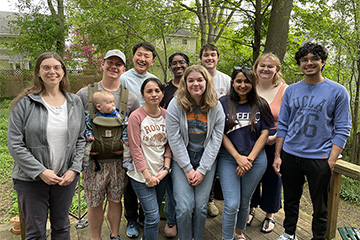CMU’s yellow sub to boost Great Lakes research
College of Science & Engineering boosts capabilities in two ways

Central Michigan University’s Institute for Great Lakes Research recently acquired a two-person submersible that will help researchers get a better handle on what’s happening beneath the surface of the Great Lakes.
But first, students and faculty from across campus will get a chance to flex their skills by upgrading its systems.
The Amik Dodem – the Anishinaabemowin word for “beaver clan” – will enhance research in several ways, said Don Uzarski, Institute director. Anishinaabemowin is the language of Michigan’s Indigenous people.
In addition to portholes that allow the crew to look into the waters beneath the surface, the front frame permits the attachment of several pieces of equipment.
One of those will allow researchers to scan underwater pipelines – like the controversial Line 5 beneath the Straits of Mackinac – to see if it has cracks, even those too small to be seen by the naked eye.
The sub is more than 20 years old but is fully functioning and safe, Uzarski said. Sub operating system technology has improved dramatically over the past two decades. So has expertise in those fields, some of which is at CMU.
One of those systems is in underwater navigation. Amik Dodem is currently fitted with a fish finder for use as a sonar. It can spot schools of fish and make a crude map of the floor, but Uzarski said he’s working with the School of Engineering and Technology to develop something much more precise.
Other improvements could target the sub’s ability to communicate with the boat that accompanies it into the water, a GPS unit and improved life support systems, Uzarski said. Another improvement could leverage research into batteries.
“Batteries are everything for this,” Uzarski said.
In addition to the School of Engineering and Technology, the work could involve students and faculty in the College of Medicine and the computer science and geography programs, he said. The upgraded systems could be ready for use by summer 2025.
The steel-framed Amik Dodem can travel at 5 knots while submerged and safely dive to 350 feet with people aboard. Funding to purchase the sub came from multiple state and federal grants.




